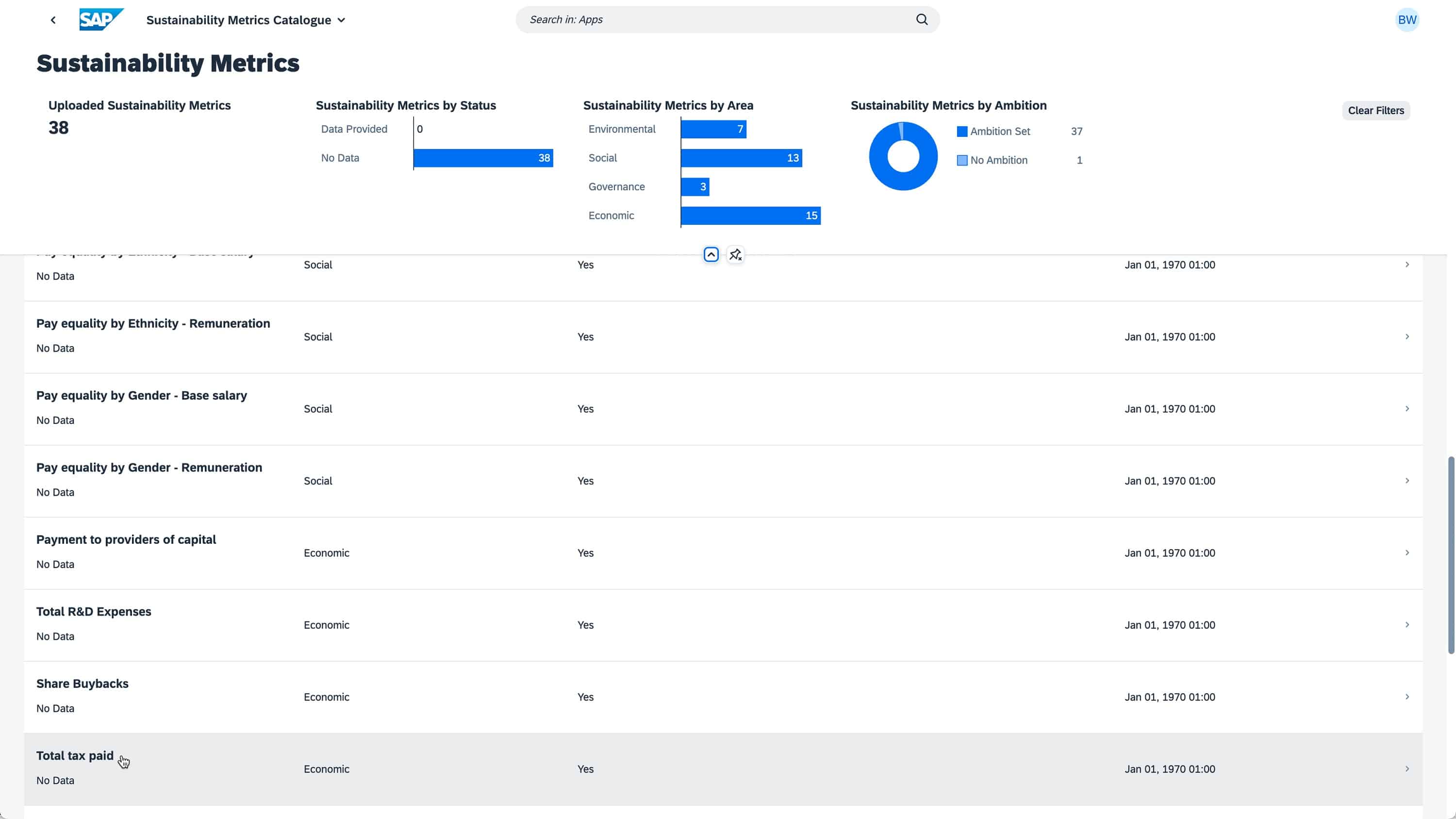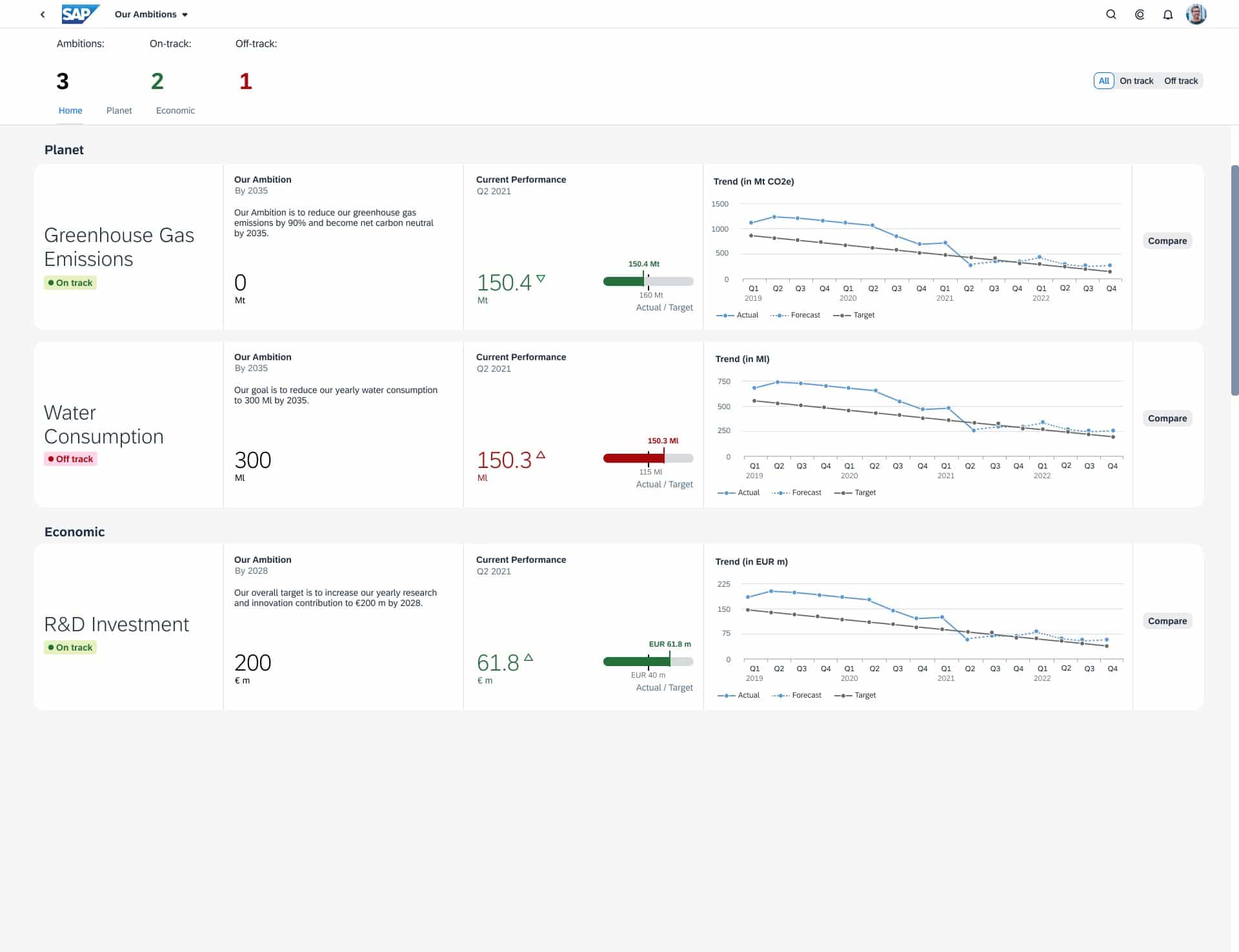Delivering innovative solutions in sustainability is a top priority for SAP. The latest release of the SAP Sustainability Control Tower solution is one such innovation, painting a comprehensive picture of our customers’ environmental, social, and governance (ESG) landscapes.
As ESG expectations from stakeholders continue to grow, our customers expect us to help them transition successfully to sustainable business models. While many organizations are already reporting on ESG aspects, a new data foundation is needed to cope with several challenges.
All organizations need help with data quality and availability. Companies need easy access to data in their enterprise applications and complement these data sets with information that often exists in spreadsheets or disconnected tools. That integration must be done more frequently and in a more automated way. Finally, the resulting data foundation must be audit-ready on all levels.
SAP Sustainability Control Tower provides this foundation. It offers critical functionalities aligned to what customers need. It is a software-as-a-service experience that allows customers to embed sustainability into their business processes with current data and insights and achieve automated, auditable, and compliant reporting.
SAP Sustainability Control Tower helps them record. Companies want to measure and manage ESG transparency along the value chain. Often, this data spans multiple sources, formats, and organizations without providing the right granular level of detail and precision. Plus, many organizations are eager for their transition to move from averages to actuals to help them bring supply chain partners forward on their joint sustainability missions.
The solution offers 37 sustainability metrics on pre-built data models supporting established reporting frameworks such as the Global Reporting Initiative, World Economic Forum, and Task Force on Climate-Related Financial Disclosures (TFCD), as well as extensible data models based on SAP and third-party structured and unstructured data. It enables harmonized insights by consolidating, modeling, and enriching ESG, financial, and operational data that is automatically connected with SAP S/4HANA to inform boardroom and business-level decisions.

The open architecture of SAP Sustainability Control Tower enables customers to grow their coverage of ESG in an incremental and agile way. The solution offers regular, gradual, and automated innovation updates through application lifecycle management. It supports extensibility to the data model and a proven calculation and process engine to provide additional flexibility. In addition, it enables a turnkey integration with SAP S/4HANA and additional integration option based on open APIs.
SAP Data Warehouse Cloud is an additional option, simplifying the integration with third-party data sources and SAP BW/4HANA. We deliver dedicated integration content in SAP Data Warehouse Cloud for usage with SAP Sustainability Control Tower.
The solution also enables customers to deal with new and increasing ESG reporting requirements in a dynamic global landscape. Our customers must often report against multiple frameworks and standards with built-in quality, audit, and assurance measures. Mature companies are already moving from limited to reasonable assurance on their ESG numbers. SAP Sustainability Control Tower comes with analytical views and capabilities.

Customers can also use SAP Analytics Cloud on top to gain deeper insights into their ESG scores to make intelligent investment decisions for sustainability programs and diversity spending. They can simulate outcomes and evaluate sustainability initiatives using what-if analysis and scenario planning. And they will be able to integrate sustainability, financial, and operational planning on one enterprise planning foundation.
Finally, SAP Sustainability Control Tower helps customers act. Executing sustainability targets is possible only when it is embedded across all business processes. Companies need accurate, actionable data so they can identify and mitigate risks in a timely way. They can also uncover new business opportunities by getting visibility across their ESG data.
Planned New Features and Functionalities of SAP Sustainability Control Tower
Later in 2022, we plan to release new features to help customers report across disclosures, starting with the EU taxonomy for sustainable initiatives and TCFD reporting. These features will focus on a high degree of flexibility, pre-integration, and rigor of financial closing. Our approach will start with top-down analysis, evolving to bottom-up calculation. We have already demonstrated a methodology for implementing the EU taxonomy with Deutsche Post DHL group, as highlighted at SAP’s German-Speaking SAP User Group (DSAG) event in September 2022.
A greenhouse gas (GHG) analytical application as part of SAP Sustainability Control Tower will give users a detailed understanding of their emissions following the GHG Protocol’s reporting principles. The application will provide filters based on existing organizational structures and integration with business data such as revenue and other financial data to help customers calculate and analyze carbon intensity.
For more information on how SAP helps companies record, report, and act on their sustainability goals, visit sap.com/sustainability.
Gunther Rothermel is head of Sustainability Engineering at SAP SE.



